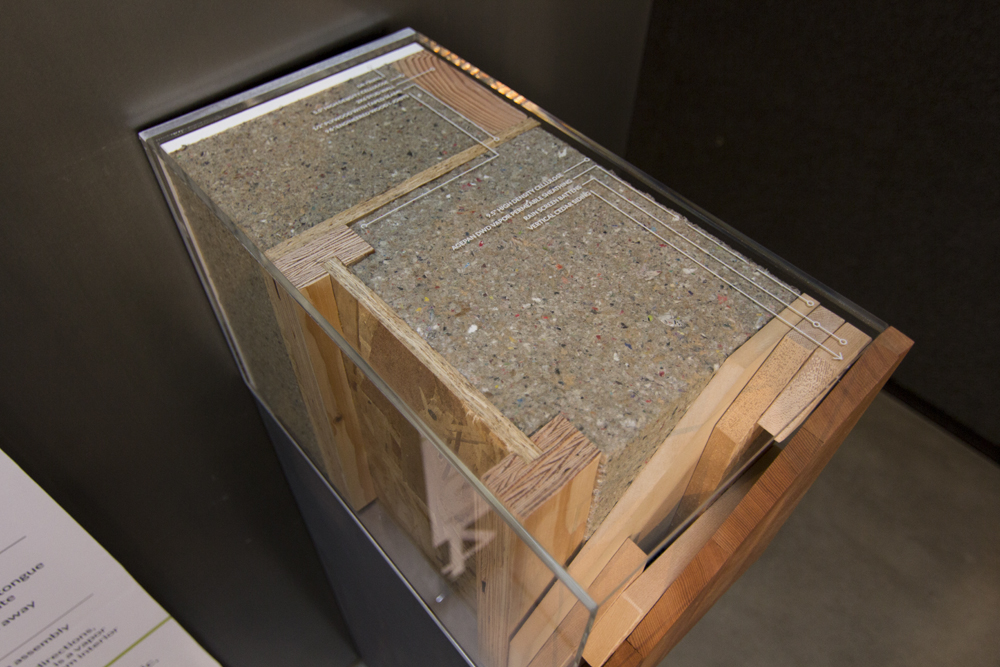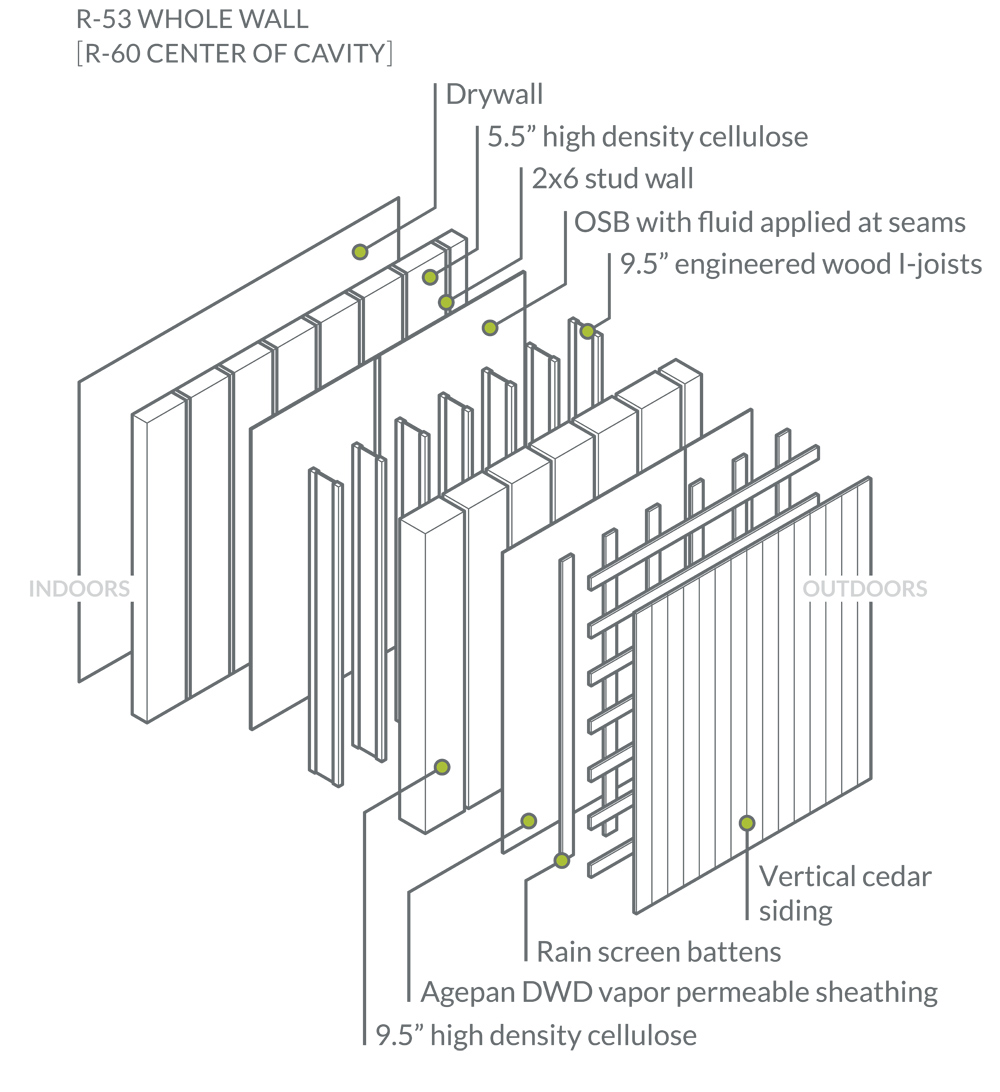NOTE: This is the second of four posts delving into the anatomy of high performance wall assembly. The last post featured the wall at Karuna House. This week’s explains our approach at Pumpkin Ridge Passive House. All four analyses are part of our building science exhibit, “Evolution of Enclosure,” that recently completed a 5-week showing at AIA Portland’s Center for Architecture.

The integrated design process between Scott | Edwards Architecture (project architect) and Hammer & Hand (Passive House consultant and builder) produced a design that celebrates the home’s performance imperatives. Pumpkin Ridge Passive House is therefore unabashed in displaying thick walls, filled with several tons of high density cellulose insulation (and sequestered carbon).
 The air barrier for Pumpkin Ridge Passive House is a layer of OSB with fluid applied at seams. While the OSB is vapor permeable (and gets more so when wet), it does retard vapor transfer.
The air barrier for Pumpkin Ridge Passive House is a layer of OSB with fluid applied at seams. While the OSB is vapor permeable (and gets more so when wet), it does retard vapor transfer.

The wall’s R-60 insulative value (center of cavity, including impact of sheet goods and air films) is provided by two thick layers of high density cellulose insulation, 9.5” in a Larsen truss system to the exterior and 5.5” in the interior 2×6 stud wall.

The first line of defense for bulk water management is Pumpkin Ridge Passive House’s vertical cedar siding and the ventilated rain screen cavity that facilitates drainage. The second (and final) barrier) is the layer of tongue and groove Agepan (wax impregnated wood fiber) panels that are so tightly fit that wind cannot blow bulk water through.

As mentioned earlier, the OSB is vapor permeable but it does retard vapor transfer. This throttles down the flow of vapor from the home’s interior into the assembly. The rest of the assembly, from cellulose insulation to Agepan layer, is very vapor open, so the airflow created across the assembly’s face by the ventilated rain screen cavity promotes the drying of both the assembly and the cladding.

See an annotated photo tour of the assembly’s layers:
Check out the other posts in this high performance wall assembly series:
- Karuna Passive House Wall Assembly
- Glasswood Passive House Retrofit Wall Assembly
- Madrona Passive House Wall Assembly








